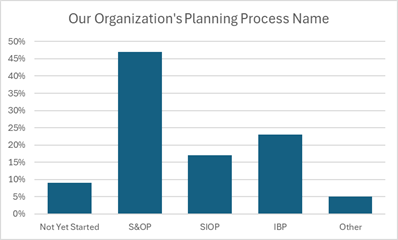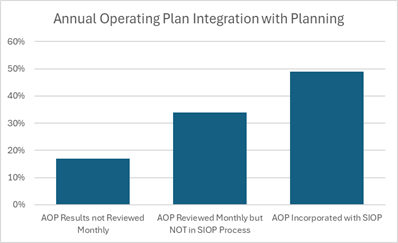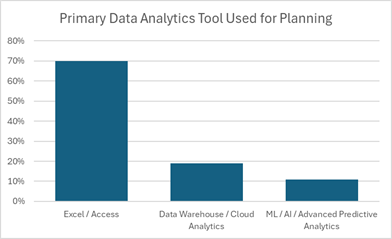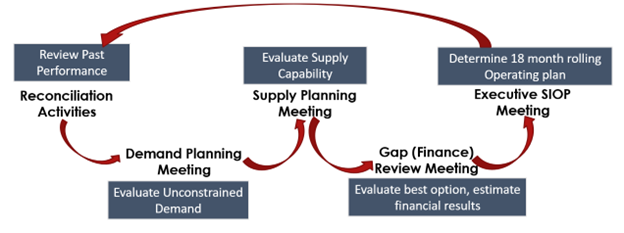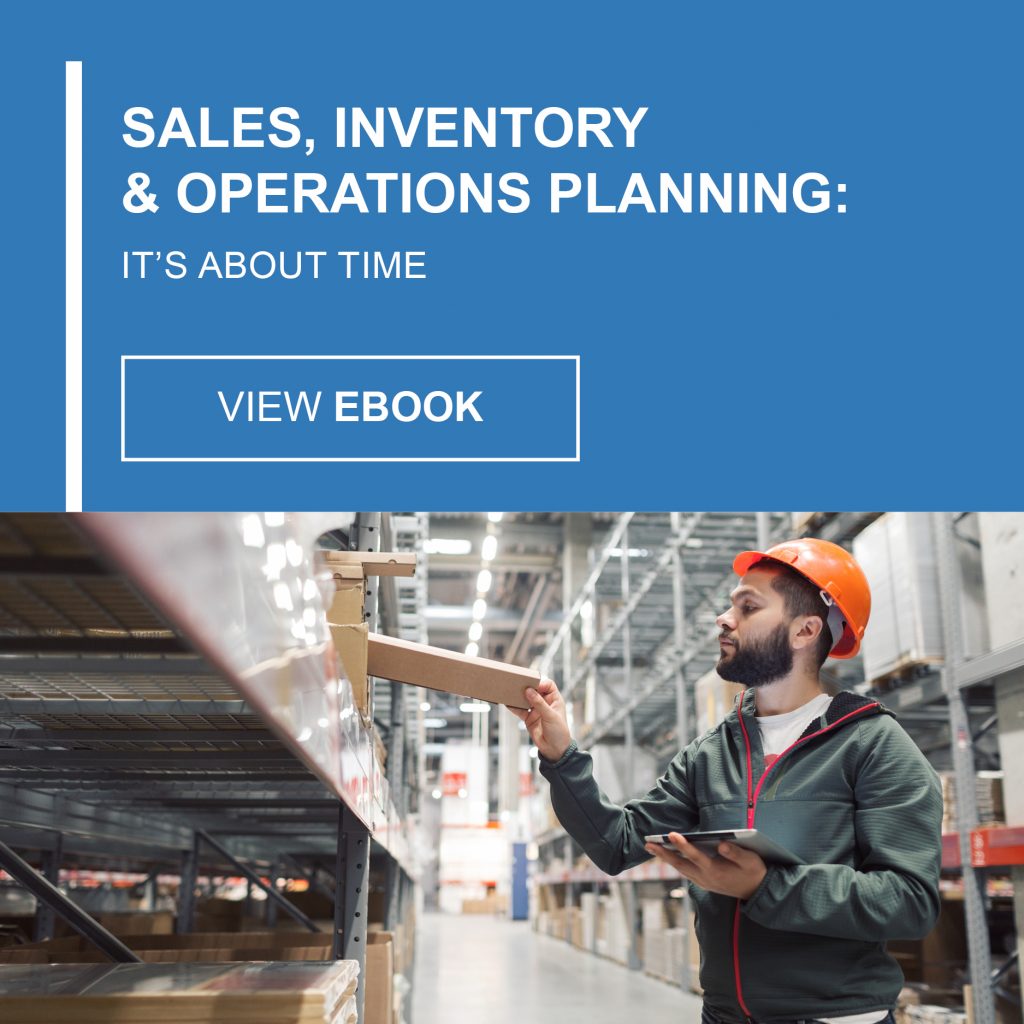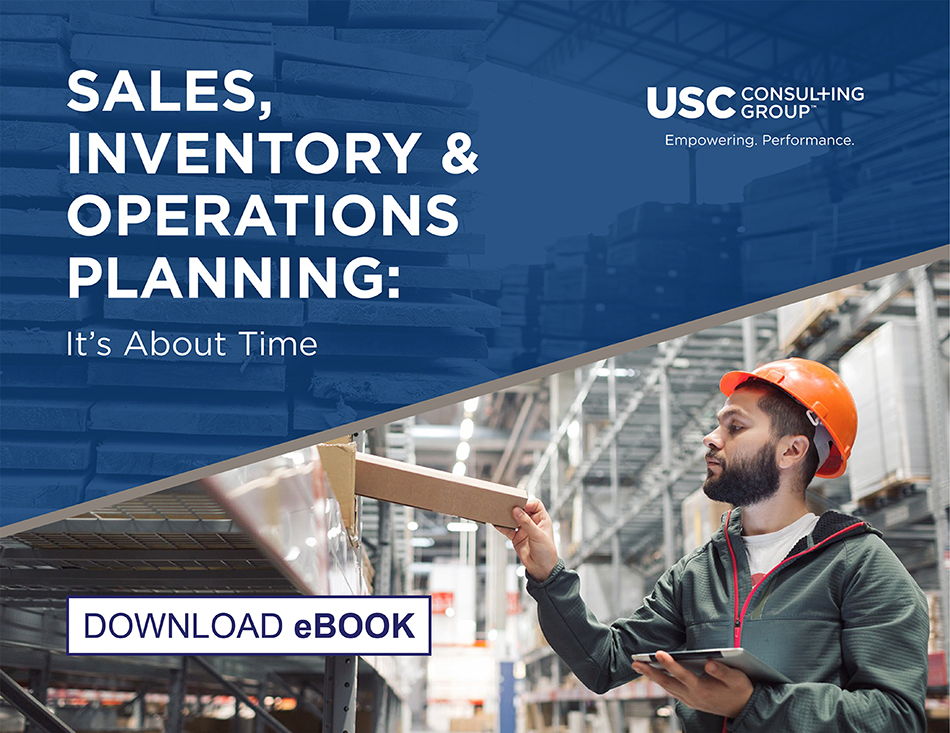-
Subscribe to Blog:
SEARCH THE BLOG
CATEGORIES
- Aerospace
- Asset Maintenance
- Automotive
- Blog
- Building Products
- Case Studies
- Chemical Processing
- Consulting
- Food & Beverage
- Forestry Products
- Hospitals & Healthcare
- Knowledge Transfer
- Lean Manufacturing
- Life Sciences
- Logistics
- Manufacturing
- Material Utilization
- Metals
- Mining
- News
- Office Politics
- Oil & Gas
- Plastics
- Private Equity
- Process Improvement
- Project Management
- Spend Management
- Supply Chain
- Uncategorized
- Utilities
- Whitepapers
BLOG ARCHIVES
- July 2025 (1)
- June 2025 (4)
- May 2025 (1)
- April 2025 (1)
- March 2025 (1)
- February 2025 (4)
- January 2025 (4)
- December 2024 (4)
- November 2024 (2)
- October 2024 (6)
- September 2024 (5)
- August 2024 (5)
- July 2024 (6)
- June 2024 (3)
- May 2024 (3)
- April 2024 (4)
- March 2024 (3)
- February 2024 (4)
- January 2024 (5)
- December 2023 (2)
- November 2023 (1)
- October 2023 (6)
- September 2023 (3)
- August 2023 (4)
- July 2023 (2)
- June 2023 (3)
- May 2023 (7)
- April 2023 (3)
- March 2023 (3)
- February 2023 (5)
- January 2023 (6)
- December 2022 (2)
- November 2022 (5)
- October 2022 (5)
- September 2022 (5)
- August 2022 (6)
- July 2022 (3)
- June 2022 (4)
- May 2022 (5)
- April 2022 (3)
- March 2022 (5)
- February 2022 (4)
- January 2022 (7)
- December 2021 (3)
- November 2021 (5)
- October 2021 (3)
- September 2021 (2)
- August 2021 (6)
- July 2021 (2)
- June 2021 (10)
- May 2021 (4)
- April 2021 (5)
- March 2021 (5)
- February 2021 (3)
- January 2021 (4)
- December 2020 (3)
- November 2020 (3)
- October 2020 (3)
- September 2020 (3)
- August 2020 (4)
- July 2020 (3)
- June 2020 (5)
- May 2020 (3)
- April 2020 (3)
- March 2020 (4)
- February 2020 (4)
- January 2020 (4)
- December 2019 (3)
- November 2019 (2)
- October 2019 (4)
- September 2019 (2)
- August 2019 (4)
- July 2019 (3)
- June 2019 (4)
- May 2019 (2)
- April 2019 (4)
- March 2019 (4)
- February 2019 (5)
- January 2019 (5)
- December 2018 (2)
- November 2018 (2)
- October 2018 (5)
- September 2018 (4)
- August 2018 (3)
- July 2018 (2)
- June 2018 (4)
- May 2018 (3)
- April 2018 (3)
- March 2018 (2)
- February 2018 (2)
- January 2018 (1)
- December 2017 (1)
- November 2017 (2)
- October 2017 (2)
- September 2017 (1)
- August 2017 (2)
- July 2017 (2)
- June 2017 (1)
- April 2017 (3)
- March 2017 (3)
- February 2017 (2)
- January 2017 (2)
- December 2016 (2)
- November 2016 (4)
- October 2016 (4)
- September 2016 (3)
- August 2016 (6)
- July 2016 (4)
- June 2016 (4)
- May 2016 (1)
- April 2016 (3)
- March 2016 (4)
- February 2016 (2)
- January 2016 (4)
- December 2015 (3)
- November 2015 (3)
- October 2015 (1)
- September 2015 (1)
- August 2015 (4)
- July 2015 (6)
- June 2015 (4)
- May 2015 (7)
- April 2015 (6)
- March 2015 (6)
- February 2015 (4)
- January 2015 (3)
CONNECT WITH US
Tag Archives: S&OP
There are a lot of terms used by organizations to describe their mid to long range strategic planning discipline. Whether your organization calls it Integrated Business Planning (IBP), Sales and Operations Planning (S&OP), Sales, Inventory and Operations Planning (SIOP) or something else, the key message is that abbreviations are not important – results are. Strong strategic planning discipline orchestrates sales plans, operations constraints, and financial objectives while giving guidance to short-term scheduling for execution. At USC, we call this discipline SIOP due to the strategic importance of inventory to smooth supply and demand fluctuations to maintain customer service levels.
Survey Says!
Businesses find S&OP beneficial because it helps balance supply and demand, it improves communication between sales and other departments, leads to better decision-making with everyone on the same page, and it ultimately results in better efficiency. Most organizations refer to their planning process as S&OP, but we think it’s incomplete. Inventory needs to be part of this process to unlock greater levels of operational efficiency and customer service rates.
Most companies have less than five years of experience utilizing a SIOP discipline and significantly, fewer than 50% of all companies integrate financial objectives into their monthly planning process. The result is the organization’s annual plans are disconnected from the monthly “replanning” SIOP process. Managers are typically held accountable to their annual plans which are increasingly out of date as the year progresses and better plans are known resulting in sub-optimal decision making based on old assumptions.
Furthermore, since most companies rely on static models such as Excel and Access to as their primary analytical tools, the planning process can be labor intensive, time consuming and more prone to human error. Integrating decision support systems with operations data, procurement data, inventory data, and customer demand improves simulation and scenario analysis capabilities. Integrating with advanced predictive analytics can further augment planning knowledge.
Sales, Inventory and Operations Planning
We tell our clients that SIOP is making sure you’re having the right conversations about the right things at the right time.
Sales, Inventory, and Operations Planning is a holistic process that integrates customer-focused demand plans with production, sourcing and inventory plans and results in improved tactical and long-term business decision making capability.
Keys to Implementing a Successful SIOP Process
- Everyone is on board. It’s simply not going to work if it’s not interdepartmental. You need everyone – Sales & Marketing, Operations, Procurement and Logistics, Planning, Product Development, Finance, IT, and the C-Suite working in lock step from the same plan.
- Planning cycles should be monthly. This isn’t a one-and-done process. Once you get on the SIOP treadmill, you don’t ever get off. We advise a rolling 18-month period, updated monthly. This ensures the re-planning process is looking out beyond the current budget year and for strategic planning.
- People and Process Discipline is a must. A good SIOP process includes a SIOP monthly process schedule/calendar of key events, RACIs, mutually agreed upon KPIs, actual vs forecasted reporting scorecards, assumptions and occurrences reporting, decisions made with action item follow up.
But Why the Added Focus on Inventory?
Inventory tells a story about a business’ operational efficiency. Inventory accounts pool the collective decisions and market forces affecting the company, telling stories of sales forecasting accuracy, manufacturing efficiency, planning effectiveness, supply chain disruptions, and quality control. Lean inventories reveal robust planning systems and culture, integrated ERP systems, and good governance. Excess inventories can be a short-term benefit to sustain high customer service levels during times of uncertainty, however they come with high obsolescence and carrying costs. Inventory is a strategic lever to smooth operations, procurement, and sales fluctuations. The right level of inventory is different for each company, and changes based on current consumer demand, supply chain disruptions, and strategic decisions.
Benefits of SIOP
- Gets departments in sync. The SIOP process helps to determine whether
your original financial expectations / budget, and your current sales plan and operations plan are in sync with each other. Updating your forecast monthly will show you where problems lie and provide action plans to address shortfalls. - Ensures that the plans are realistic. The key stakeholders from each department participate in formulating the SIOP plan. Since all assumptions are transparent throughout the process, each department has more time to evaluate its resources and capabilities in the context of the most recent company-wide plan. The result is a solid set of department plans that are based on latest expectations and known capabilities.
- Effectively manages change. Many industries have faced significant planning challenges in recent years. Having an agile and timely planning process helps decision makers roll with the punches. With SIOP, your business can make holistic, controlled responses to changes instead of making knee-jerk, departmental centric reactions.
- Measures performance. Our customized approach to KPIs ensures that success measurements identify where the organization is challenged and where to focus on improvement.
- Builds teamwork. SIOP gives each department an opportunity to participate in the overall planning process.
Interested to learn more about how adding inventory to your planning can make you more efficient? For more information on how SIOP can help your business read our eBook, “Sales, Inventory and Operations Planning: It’s About Time.”
*This article is written by USC Consulting Group’s Supply Chain Practice Leader, David Newman.
All roads are leading most industries to adopt increasingly more sustainable practices. The pressure for manufacturers to go green is growing in the face of climate change, supply chain challenges and especially consumer preferences.
A report from the Roundup, “Environmentally Conscious Consumer Statistics,” paints a pretty clear picture.
- Products marketed as sustainable grew 2.7x faster than those that were not.
- 78% of consumers feel that sustainability is important.
- The sale of carbon labeled products (such as those with 1% For the Planet or Climate Neutral Certification) doubled in one year, reaching $3.4 billion in 2021.
- 62% of people say they “always or often” seek products to purchase because they are sustainable, which is up from just 27% in 2021.
Consumers are opting for products that are sustainable, but that’s not the only headline for manufacturers. Because, it’s not just products. It’s the companies, too. Some 29% of consumers said they are “often or always” influenced by a company’s commitment to adopting more sustainable practices.
Sustainability challenges: It’s not easy being green
Many in the manufacturing industry are undoubtedly feeling some kinship to Kermit the Frog these days. Despite the pressure to adopt more sustainable practices, as the Muppet so famously lamented: “It’s not easy being green.”
It’s all well and good to work toward shoring up the environment (and we need to) but it’s a challenging lift for manufacturers. Some obstacles include:
High upfront costs. New technologies, processes and materials come at a price. It’s especially tough for manufacturers in industries like food and beverage, which has razor-thin margins.
Long wait for return-on-investment. ROI from major expenses can take years to come to fruition.
Supply chain challenges. Even if your company has shifted to more sustainable practices, what about your suppliers?
Skilled labor shortage. It’s difficult enough to find warm bodies to work on the line. But new technologies come with new skills requirements.
Opportunities are emerging
At USC Consulting Group, we help companies look for the opportunities within challenging situations. We always find the silver linings. Here are a few:
Cost reduction. Yes, there are upfront costs. But sustainable practices can lead to reduced energy and water consumption, the possibility of lower regulatory compliance costs, and lower materials costs by using recycled materials.
New partners, suppliers and revenue streams. The sustainable marketplace is an ecosystem all its own. It’s possible to find new partners, customers and even suppliers.
Attract and retain top talent. Yes, there is a labor shortage. But the companies with strong sustainable practices are attracting the best people out there. Companies that care for the environment also find their employees are more engaged and involved.
Governmental tax breaks. The government is committed to rewarding companies for adopting more sustainable practices with tax breaks and other financial incentives.
Strategies for manufacturers
One of the best ways to adopt more sustainable practices is to first look in the mirror. It’s not necessarily about investing in new technologies and turning the world upside down. First, look at your processes and operating systems. You’ll likely find efficiencies you didn’t even know were there. Places to start:
Minimizing waste. Lean Six Sigma methodologies can find hidden wastes and lead to more efficient operations. Not only will it save you considerable money, but minimizing waste is a key principle in sustainability. That’s a win-win.
Operations improvements. How efficient are your operations? A solid management operations system, which is a structured approach to your operations, creates much greater efficiency. The best MOS focus on processes, systems, roles and structures to map out how the job gets done, and by whom. Learn more about it in our short video, Stop the Firefighting Mentality to Improve Your Bottom Line.
Sales, inventory and operations planning. You’ve heard of S&OP. We added the “I.” We find inventory to be a key piece of the operations puzzle. When doing sales forecasting and planning for demand and supply, adding inventory elevates the process a notch. It makes inventory a strategic tool. Learn more about it in our free eBook, “Sales, Inventory and Operations Planning: It’s About Time.”
Training. About that skilled labor shortage. A way to combat that is by training and upskilling your people. And solid training for not just employees on the line but managers, too, will get everyone on the same page, creating greater efficiency organization-wide.
By moving toward more sustainable practices, manufacturers can ultimately reduce costs, find greater efficiencies, attract both consumers and employees and help the planet in the process. But it’s not easy. At USC Consulting Group, we’re the experts on helping companies become more efficient, effective and profitable. With more than 55 years behind us, we’ve seen trends come and go. The key is turning challenges into opportunities. Get in touch to find out more.
The global supply chain is a delicate framework in which every participating business needs to stay nimble and adaptable — because, as we saw during the pandemic, one singular event can throw a wrench into the entire system. Innovation and optimization need to be top of mind.
But what qualifies as effective optimization? Given the complexity of the flow of goods, cash and information between multiple producing, storage, delivery and consuming partners, companies can easily neglect key areas, or focus too hard on others. Disruption anywhere along the supply chain line can (and does) create major headaches, stifle throughput and force manufacturers into a dance of optimizing supply and demand.
We can help with that. At USC Consulting Group, we’ve been helping companies optimize their operations for more than half a century. We’ve learned a few things along the way. Here are some important do’s and don’ts for optimizing your supply chain. It’s about helping your business through the ongoing disruption and preparing it for unforeseen events in the future.
Don’t: Use outdated systems
There’s a tendency for many businesses to take an “if it ain’t broke, don’t fix it” approach. However, just because something is working in real time doesn’t mean there aren’t improvements to be made. In today’s data-rich environment, one of those improvements involves data analytics.
Outdated inventory systems, suboptimal communications and disconnected information are some of the biggest areas that hold an organization back. The limitations of legacy technologies thwart the goal of end-to-end transparency along the line and impede rapid-response decision making. Before you know it, you can end up in a data-rich, intelligence-poor environment. It’s so common a scenario now, there’s even an acronym for it: DRIP. Aptly named, because the potential power of all of that data is dripping down the drain if you’re not equipped to use and interpret it.
Do: Use SIOP
Sales, Inventory, and Operations Planning (SIOP) is a method we use here at USC Consulting Group that emphasizes inventory as a strategic tool to allow businesses to get a better look at their operations and formulate superior strategy decisions.
SIOP takes advantage of the wealth of digital data available to business owners to gain a strategic advantage. Having the ability to capture, analyze, integrate and interpret high-quality data is the key to staying ahead of the market. The aim is to achieve process automation and glean predictive analytics, which allow you a clearer look at your operations to make better-informed decisions.
Don’t: Segregate internal planning and communications
Silos! How often do we hear about the dangers of silos in businesses? It’s the concept of departments working separately, having poor communication and perhaps duplicating or negating each other’s efforts. We like to identify it as “the left hand doesn’t know what the right hand is doing.” Any way you refer to it, segregating internal planning and decision-makers leads to trouble in your supply chain.
These systems separate workers into independent subsections with little to no visibility between external partners. These separate groups work in their own ecosystem, unable to effectively communicate with other departments or relevant groups. This not only slows an operation down, but extinguishes any potential spark of collaboration or innovation that may arise from working in conjunction with each other.
Do: Increase information flow
Uncertainty in the supply chain is caused by disconnected information. A truly effective and innovative workplace allows all relevant personnel to communicate with each other.
Internally, abandoning legacy email and phone methods of communication in favor of end-to-end, 3-way knowledge sharing and open social platforms speeds up collaboration and enhances efficiency. Externally, keeping a concurrent, continuous and completely open demand plan is essential for maintaining healthy, profitable business relationships.
Enhancing communication and information flow internally and externally is another key for staying ahead of the curve and fostering innovation for supply chain businesses.
Don’t: Test out a new system on a limited basis
There can be hesitation for a business to roll out a new system, opting instead to test it out in certain departments or methods of communication. This can be a mistake.
Without full implementation, a business never sees the full power and potential of a new system and will be quick to abandon it in favor of the legacy methods they have been operating with for years. The right system can revolutionize operations on all fronts, from internal communication to vendor relationships to future workplace innovations. Without every aspect of a business running on a new method, a business owner may never see the full payoff.
Do: Find a trusted method and go all in
While there certainly are challenges with implementing a new system, it’s important to find a trusted method and go all-in. For example, let’s look back at our SIOP system.
Different areas of a business have different roles and objectives. Sales is eternally optimistic, operations wants to know precisely what is going to be produced and shipped, purchasing makes conservative commitments to suppliers, and finance has to predict performance and cash flow. Getting everyone pushing in the same direction for a system change can be a daunting task.
We have found that SIOP works optimally if your entire enterprise uses it. If you allow a facility, business unit or a customer team to continue to operate outside of the SIOP process it will undermine your efforts. That is why it’s so important to get everyone on board for a new process to truly see the difference it can make.
At USC Consulting Group, we’re dedicated to helping our clients weather any storm, including the kind of supply chain tsunami we’ve all experienced recently. Give us a call today to talk about how we can put our expertise to work for you.
Remember the familiar line from an old TV cop show: “There are 8 million stories in the Naked City”? As USC Consulting Group’s Vice President and Senior Operations Manager Paul Harker likes to point out, the same could be said about your inventory.
Like most dramas, the story of your inventory management can take unexpected turns. It’s very easy to get lost in the din of safety stock levels vs. Lean principles, order quantities, reorder triggers and the lead time to replenish the stock. Supply chain disruptions and shortages haven’t helped matters over the past few years. The plot unravels when these stories don’t add up to a single coherent tale.
Major characters in this inventory management drama:
Operations, which sees inventory as a buffer against fluctuating demand. But how much is too much? They don’t want an excess of stock, which would fly in the face of the popular “just in time” or Lean operating method, which, admittedly took a bit of a hit during the pandemic when people panicked about shortages and bolstered their safety stock.
Sales wants product at the ready at a moment’s notice, not “just in time,” but “all the time.” They’re not overly concerned with storage space, inventory investment or production efficiency.
Finance looks at inventory as a double-edged sword. They want to reduce inventory in order to free up cash and minimize carrying costs. But inventory is also collateral. High levels of production, whether the goods are sold or not, can absorb overhead and drive better month-end results, which are Finance’s Holy Grail.
Executives are focused on achieving quarterly corporate objectives and view inventory in terms of dollars.
At a fundamental level, all of these decision-makers speak different languages, have different perspectives and conflicting messages. Of course, everyone has the same goals: efficiency and profitability. But they may be at cross purposes getting there.
The Hero: SIOP
You might be thinking: “Is that a typo? Don’t they mean S&OP?” Yes and no. No, it’s not a typo. And yes, S&OP, the business management process that involves sales forecast reports, planning for demand and supply, and other factors, is the foundation of all of this. We just think S&OP is missing something: Inventory.
When you’re focusing on inventory, it elevates the entire planning process up a notch. When your inventory is optimized, things tend to fall into place. But it is not an easy mark to hit in these days of supply chain disruption and the sometimes conflicting goals of key decision-makers. With SIOP, you can circumvent these challenges and make your inventory work for you.
“A key to SIOP is to emphasize inventory as a strategic tool to help offset variation in either demand or production issues,” explains David Shouldice, Senior Vice President and Managing Director at USC Consulting Group. “One lever of control in the SIOP process is to make inventory harder working as a strategic tool.”
As Shouldice notes, it’s about having the right conversations about the right topics at the right time.
This isn’t a one-and-done process. The SIOP planning horizon should be at least a rolling 14-month period. We recommend that our clients update their plans monthly. Some do it more often than that. The point is covering a sufficient span of time to make sure the necessary resources will be available when you need them. The plans take into account projections made by the sales and marketing departments and the resources available from manufacturing, engineering, purchasing and finance. All of that together works toward hitting the company’s goals and objectives.
Using SIOP for inventory management
Sales, Inventory and Operations Planning helps your company get departments in sync, ensures that everyone is on the same page and realistic about the process, helps you manage and roll with changes, and measures performance.
One powerful component of SIOP is that the process involves all of the key players in your inventory drama.
Here’s who we typically see take part in the SIOP process:
- President
- Vice President, Sales and Marketing
- Vice President, Operations
- Director of Logistics
- Vice President, Engineering
- Vice President, Finance
- Vice President, Information Systems
- Vice President, Human Resources
Different languages? You bet. But getting them all working together cuts down on the noise of those different languages. One reason SIOP is such a critical management tool is that key players from many departments are working from the same plan, and able to compare actual results to plan, evaluate their performance, and prepare updated plans going forward. SIOP: The universal translator, or C-3PO, for your business.
It is a powerful tool to help you wrangle your inventory management, achieve the optimal balance between not enough and too much, and settle back into Lean (or just in time) manufacturing principles that can eliminate waste and help ramp up your efficiency.
If you’d like to learn more about SIOP, download our (free) eBook, “Sales, Inventory & Operations Planning: It’s About Time.”
Disruptive supply chains cause uncertainty. This leads to disjointed internal functions and frustration. And although there have been significant improvements with technology, supply chain disruptions are still managed by people.
Having good relationships with your strategic suppliers will help ensure someone will answer your call regarding delayed delivery dates, but that’s not enough to ensure supply continuity in our increasingly complex and disruptive supply chains.
There are five types of solutions supply chain managers can employ to decrease uncertainty and to improve reliability in their supply chain. We have compiled them into this infographic:
- TIME
- PRICING
- PRODUCTION
- INVENTORY
- INFORMATION
Each type of solution can be effective, however each has its downside to watch out for.
Time
Expediting freight or delaying order fulfillment are commonly used tactics.
What to watch for: If your customers have other options and low customer loyalty, delaying delivery dates can significantly reduce your revenues. If you have a low margin product, premium freight can wipe out profits.
Pricing
Prices for hard-to-get commodities skyrocket during times of uncertain supply, contributing to cost inflation.
What to watch for: If inflated material costs can’t be passed on to customers, margins suffer.
Production
Production solutions to supply disruptions include flexible manufacturing and quick changeover practices, having alternative suppliers and substitute materials, reducing quality rejects in order to have more saleable product, and improving the source, make, and deliver cycle times.
What to watch for: Production solutions often take time to develop, which is why they are effective during times of certain supply, but when dealing with surprising disruptions, they’re often too little, too late.
Inventory
Stocking up on inventory is a common response to disruptions, however warehouse and storage space can be a constraint requiring investment in facilities and equipment.
What to watch for: Excessive inventories drain cash and tie up working capital. A better practice is to use statistical analysis to evaluate how changing lead times are affecting the reorder points and order quantities in your ERP system.
Information
Uncertainty is caused by lack of information. Embed a strong SIOP process — Sales, Inventory, and Operations Planning. Conduct value stream maps to understand the tiered network of the supply chain. Implement strong supplier scorecards, and have a robust risk register process where there are early warning systems, contract optionality, and redundancies in the supply base.
What to watch for: Information solutions are sometimes viewed as expensive, however they are rarely more expensive than increasing investments in facilities and equipment, or habitually discounting obsolete inventory, or perpetually incurring premium freight.
If your company needs help reducing supply disruptions, turn to the supply chain experts at USC Consulting Group. We have been empowering our clients’ performance for over 50 years.

S&OP is a business management process that involves sales forecast reports, planning for demand and supply, and other factors. The goal is to help companies get a better, more clear look at their operations and create better-informed strategy decisions, allowing them to deliver what clients need in the most profitable way.
It’s a useful process, but we’ve found a lot of our clients do not include inventory as a strategic tool in their S&OP process. Therefore, they leave the “I” out of SIOP.
“A key to SIOP is to emphasize inventory as a strategic tool to help offset variation in either demand or production issues,” explains David Shouldice, senior vice president and managing director of USC Consulting Group’s global mining and metals practice. “One lever of control in the SIOP process is to make inventory harder working as a strategic tool.“
Adding inventory into the mix is just one additional step, but we find it can be the key to the whole process. When you’re focusing on inventory, it requires more careful planning and elevates the entire planning process up a notch. When your inventory is optimized, which is not an easy mark to hit in these days of supply chain disruption, things tend to fall into place. With SIOP, you can make your inventory work harder for you.
Download our free eBook “Sales, Inventory and Operations Planning: It’s About Time” to discover the SIOP process, how it works, and the benefits of including inventory into your strategic planning process.
You will learn the principles of SIOP that include:
- In-depth definition of what is SIOP
- SIOP’s core components
- The benefits of implementing SIOP
- How it works in practice
- Real-world example case study
The Sales, Inventory and Operations Planning process assists USC Consulting Group in helping our clients become more efficient, profitable and competitive. If you’d like to find out more, contact us today.
Sales, Inventory & Operations Planning (SIOP) is a dynamic process in which the company’s operating plan is updated on a regular monthly or more frequent basis. The plans take into account projections made by the sales and marketing departments, the resources available from manufacturing, engineering, purchasing, and finance, and are directed toward hitting the company’s objectives. Sales, Inventory & Operations Planning is done on an aggregate or family level, and covers a sufficient span of time to make sure that the necessary resources will be available. Any difficulties in supporting the sales plan are worked out. The approved aggregate plans drive the individual departmental detail plans. Each month, the representatives meet again to determine whether the overall company plan is on course, and to adjust for changes in the marketplace and changes or problems within the company.
Another contribution of Sales, Inventory & Operations Planning is that it enables the company to fine-tune its long-range strategic plan and annual business plan. The strategy must answer such vital questions as:
- What is our business (products, and services)?
- To whom do we sell (markets, customers)?
- What resources are required (people / skills, technology, plant and equipment, distribution, etc.)?
- What is the measure by which we compete (quality, delivery, price, service)?
- What is our financial strategy (profit, growth, ROA, ROI)?
- Any additional strategies (make or buy, market share, flexibility)?
Sales, Inventory & Operations Planning offers another key benefit to companies striving for the competitive edge: it enables them to operate Manufacturing Resource Planning (MRP II) at its full potential. When Sales, Inventory & Operations Planning is the driver in an MRP II system, the results are likely to be a Class A performance, which in turn means better customer service, more reliable performance, reduced costs, and greater profits.
Objectives of Sales, Inventory & Operations Planning
- Support and measure the business plan. Sales, Inventory & Operations Planning helps to determine whether your original financial expectations (budget), current sales plan, and operations plan are in sync with each other. It does this through monthly reviews of the marketplace and updates of the company’s operations plans. The updated plans must be in tune with the marketplace.
- Ensure that the plans are realistic. The key players from each department participate in formulating the new plans to make sure that all recommendations can be realistically supported. Since all of the numbers and assumptions are out on the table throughout the process, each department has more time to evaluate its resources and capabilities in the context of the company-wide plan. The result is a solid set of department plans that are based on real numbers and capabilities.
- Effectively manage change. The ability to carry out Sales, Inventory & Operations Planning is synonymous with being able to manage change, to substitute controlled and appropriate responses for knee-jerk reactions.
- Better manage finished goods inventory and / or backlog to support customer service. Maintaining the right level of finished goods inventory for make-to-stock families is essential for good “off the shelf” customer service. Operating at too high an inventory level results in extra costs, while operating at too low a level creates too many back orders. In a similar manner, controlling backlogs for make-to-order products is also essential for good customer service. If actual backlog becomes too large, delivery times stretch out, which eventually will cause customers to go elsewhere. By contrast, insufficient backlog can incur extra operating costs.
- Measure performance. Sales, Inventory & Operations Planning incorporates performance measurements to identify whenever actual performance is deviated significantly from the plan. The two main purposes of this are to separate those activities that are in control from those that aren’t, and to quickly bring the out-of-control situation to the surface so that an evaluation can be made and, if necessary, corrective action taken.
- Build teamwork. A key element of Sales, Inventory & Operations Planning is that it gives each department an opportunity to participate in the overall planning process. Each executive brings his experience and skills, which add insights to the matter of making changes to the current plans. These same talents can respond to proposed changes in terms of consequences and alternatives.
Prerequisites for Performing Sales, Inventory & Operations Planning
- Each department must gain an understanding of the Sales, Inventory & Operations Planning process.
- The company must commit the time and resources to the process
- The company must define product groupings or families
- The company must establish an adequate planning horizon
- The company must establish and manage time fences.
Understanding How to Operate
For SIOP to be effective, there can be no “black boxes” in the process; all participants must understand how it works and what it is designed to achieve. When people understand that sharing information does not mean giving up control and they see that the exchange actually leads to gaining control, they will be more willing to work in concert with their fellow departments toward the larger objectives of the company.
Commitment and People
Embarking on the Sales, Inventory & Operations Planning process is like making a lifetime commitment.
A suggested list of participants is as follows:
Company President, Vice President Sales & Marketing, Vice President Operations, Director of Logistics, Vice President Engineering, Vice President Finance, Vice President Information Systems, Vice President Human Resources
Optional Participants:
Products Managers, Materials Manager, Manufacturing Managers, Distribution Managers, Customer Service Manager
Defining Families
SIOP is carried out at the aggregate level. By “aggregate” we mean product groupings or families rather than individual products or items. The idea is to get effective input and control from management. This comes about by managing families, not items, and managing rates, not specific work orders.
Planning Horizon
The term “planning horizon” refers to how far ahead you need to establish your plans. Everyone recognizes that Sales, Inventory & Operations Planning is long-term, but the word “long” needs to be quantified. The SIOP plan must extend far enough into the future to ensure the availability of all resources. Thus, whichever resource – material, equipment, people – takes the longest determines the length of the planning horizon.
Time Fences
All departments must recognize in their SIOP process that changes in the plan are time-dependent; that is, the closer the change, the more costly or impossible it may become to make the changes in the plan. For every product family, there are “time fences” – guidelines that demarcate when changes are feasible. The fences reflect the realities of each business.
Sales, Inventory & Operations Planning as an Ongoing Process
A critical aspect of SIOP is that it not a one-time event during which production levels are established. For each Sales, Inventory & Operations Planning cycle, the key players from each department compare actual results to plan, evaluate their performance, and prepare updated plans for the current period.
Sales, Inventory & Operations Planning meetings should take place at least once per month. A month is usually a sufficient period of time to differentiate a trend from a minor variation or “blip,” but it is not so long that corrective action is no longer possible. Still, there are occasions when SIOP meetings must be held more frequently than once a month, depending on the nature of the company and the volatility of the marketplace. Companies that sell seasonal items, for example, might have to meet weekly prior to and during their peak selling periods.
Another cause for meeting more frequently or on a special basis is abnormal demand. When demand is suddenly noticeably higher or lower than normal, sales and marketing must decide if the demand represents real change or just a temporary anomaly. The key point is that decisions about how to handle abnormal situations must be made in a timely fashion at the appropriate management level.
Developing a proactive strategy that syncs up all divisions across a company enables flexibility and improves overall production. For help optimizing your Sales, Inventory & Operations Planning process, contact the company that was established over 50 years ago as Universal Scheduling Corporation (USC) and has been excelling clients’ processes ever since.
And to learn why inventory is the key to the whole process and why we identify it as SIOP and not S&OP, download our eBook below:
Maintaining a sustainable manufacturing facility is no ordinary task. At times, the difficulty of it can seem like a high-wire act. In fact, were manufacturing processes not primarily carried out within the confines of a warehouse, the Big Top would be a fitting replacement, as pulling it all together requires the balance of a trapeze artist or Cirque Du Soleil performer.
But accomplish it they do, and while the feat may not always be easy, it can be made simpler through sales and operations planning, or S&OP. What is S&OP? What are the steps involved and who are the actors that contribute to this all-hands-on-deck effort?
What is S&OP?
From a process standpoint, manufacturing is primarily composed of two elements: supply and demand. The goal is to produce at a rate that’s roughly in line with the rate at which a product or service is consumed. Sales and operations planning is designed to marry those factors so that they align with a business’ long-term strategic goals from a standpoint of profitability. The American Production and Inventory Control Society (APICS) puts sales and operations planning a bit more succinctly, describing it as “the function of setting the overall level of manufacturing output and other activities to best satisfy the current planned levels of sales.”
Furthermore, as APICS defines it, S&OP involves the recognition of general business objectives as they pertain to the supply chain, such as profitability, customer lead times, and inventory management. For instance, to diminish backlog, manufacturing facilities may seek to consolidate resources to produce more efficiently and reduce waste. S&OP lays out how this will take place and what steps are involved in the process.
While manufacturing facilities may deploy sales and operations planning for different business purposes or goals, each process is composed of a few central pillars. They include the following:
Gather data
To get a sense of how supply and demand are working relative to one another and are harmonious with your company’s objectives, you must have something to measure. That’s what the first step is all about. Whether it’s inventory, recent sales, or cash on hand, data is gathered and aggregated to identify trends and see how they align with corporate goals. It’s important that this data be as accurate as possible, as the process moving forward hinges on what the facts are on the shopfloor. In short, the outcome at the end largely depends on what information is available at the very beginning.
Assemble key stakeholders
“The data that’s compiled will largely dictate the stakeholders to assemble.”
Manufacturing companies are multilayered, involving personnel in many different divisions, such as fabrication, customer service, processing, delivery, quality control as well as research development. Since the goal of S&OP is ensuring supply and demand aligns with the company’s long-term goals, representatives from each division should be represented during S&OP meetings to interpret the data that’s complied. The data that’s compiled will largely dictate the stakeholders to assemble. The frequency of these meetings is also contingent on what’s being assessed, such as sales, production, development or customer satisfaction.
Examine demand
As its name implies, demand is the focus in this phase of S&OP. Virtually every aspect of demand is examined here. For example, questions may include how a particular product sold during a given period of time (e.g. monthly, quarterly, yearly), if the demand was in line with expectations or what actions may be needed to increase the desirability of a product if demand was weak.
Examine supply
Supply and demand are the ultimate pairing: Each is heavily contingent on the other. Here, supply issues are reviewed both as they currently exist, what happened previously and how it will look in the days ahead. For example, if demand were to improve, would the facility have the requisite needs to produce at a higher rate to avoid shortages? What will the costs be? What processes need to be honed to ensure efficiency? These are just a few of the questions asked in this portion of sales and operations planning.
Reconcile and assign
The last step in S&OP is putting it all together so the collective goal is put into motion. For example, if stakeholders need to be reassigned or new responsibilities are required, what that actually looks like is fleshed out in this phase. Additionally, if stakeholders have questions or issues, they would make mention of them so everyone is on the same page.
As the old saying goes, a failure to plan is a plan to fail. Sales and operations planning provides the roadmap for developing a harmonious strategy that can help you achieve success. Manufacturing involves many working parts. Depending on your company’s size, you may only interact with the individuals that are within your department. S&OP allows stakeholders from each unit to see how everyone else is doing so the appropriate modifications can be made. And at USC Consulting Group, we can help you make S&OP more than mere meetings, but productive meetings of the minds. Regardless of the challenge you face, we can offer strategic insight to help you reach your operational goals.
Please contact us to learn more and experience the USC Consulting Group difference.

